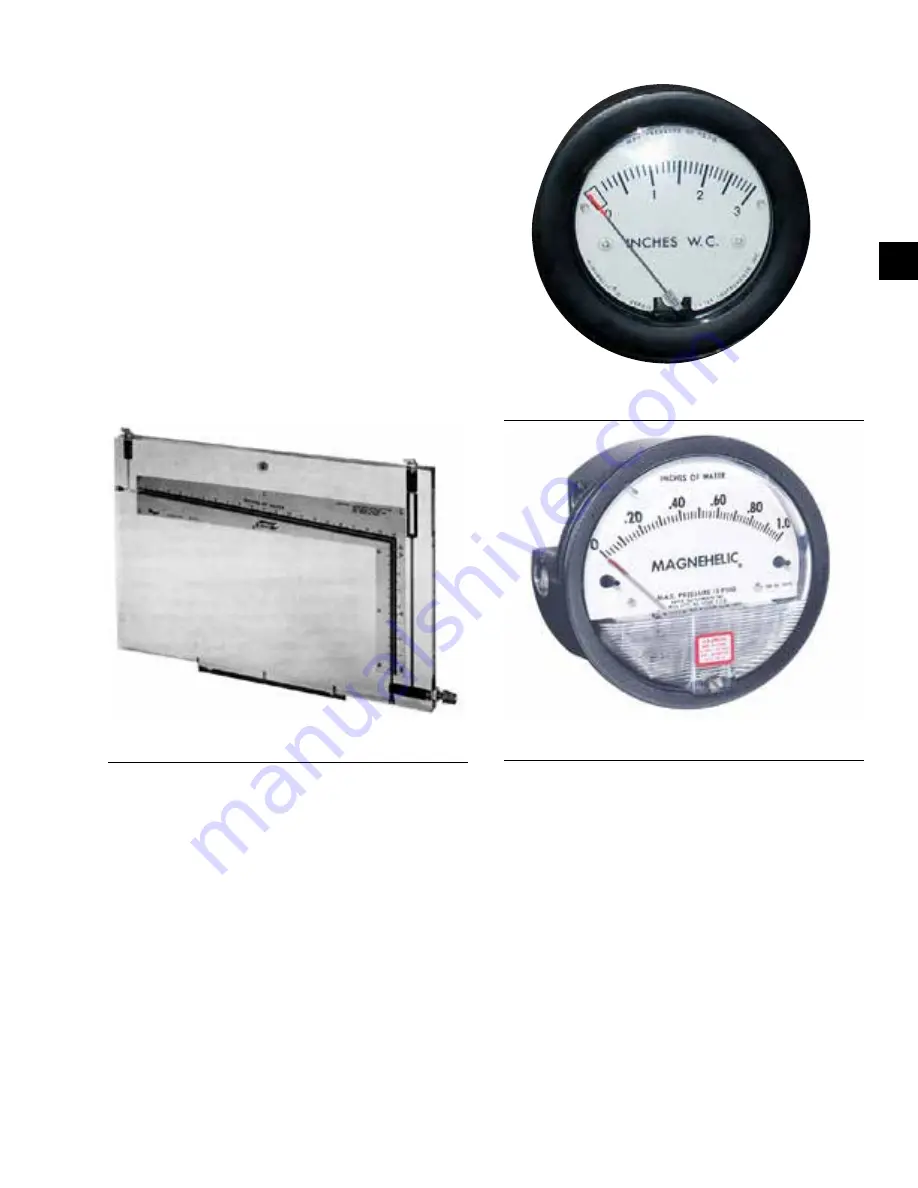
JOHNSON CONTROLS
79
SECTION 4 - SERVICE AND REPAIR
FORM 102.20-OM2
ISSUE DATE: 6/01/2015
4
To read velocity pressure, the total pressure tap at the
end of the pitot tube is connected to one leg of a ma-
nometer and the static pressure tap at the other leg of
the manometer, as shown in
.
INCLINED MANOMETER
This instrument is a simple, fool proof device, which
responds directly to the air pressure exerted against it
(transmitted from the pitot tube), and reads directly in
inches of water. Ranges vary. The technician should
have one or more instruments to cover the range of 0-8
inches of water as shown in
.
Before using the inclined manometer, ensure the in-
strument is level, and then adjust the meniscus to the
zero mark. The adjustment knob is located at the base
of the fluid reservoir.
LD27926b
FIGURE 82 -
INCLINED MANOMETER
FILTER GAUGE
The filter gauge, a diaphragm-operated gauge, has sev-
eral advantages over a liquid manometer.
Unless extreme accuracy is required, this instrument
may replace the manometer for average air condition-
ing work, and like the manometer, is available in a va-
riety of ranges. A minehelic guage is only two in. in di-
ameter and has a limited scale. A magnehelic gauge is
four in. in diameter and has a limited scale. Several in-
struments may be required to cover the normal ranges
encountered in average air conditioning jobs as shown
in
.
LD11693
FIGURE 83 -
MINIHELIC FILTER GAUGE
FIGURE 84 -
MAGNEHELIC FILTER GUAGE
The filter gauge should be factory-installed level. Ad-
just indicator to zero with no airflow or pressure differ-
ence across the sensors. The adjustment screw is located
at the bottom behind the plastic cover. When replacing
the cover, do not over tighten. The cover could "bottom
out," causing the indicator to stick. When the airflow
is initiated, the indicator should move to the right. If it
moves in the opposite direction, reverse the tubes.
U-TUBE MANOMETER
Pressure is defined as force per unit area.The best way
to measure air pressure is to balance a column of liquid
of known weight against the air pressure, and measure
the height of liquid columns so balanced. The units of
measure commonly used are inches of mercury (in.
Hg.), using mercury as the fluid; and inches of water
(inches wg), using water or oil as the fluid.
LD19130






































